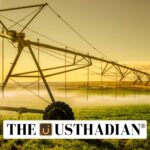Overview
Addressing Land Degradation in Agrifood Systems: The Food and Agriculture Organization of the United Nations (FAO) has released the State of Food and Agriculture 2025 (SOFA 2025), highlighting how human-driven land degradation is undermining global agrifood systems. The report defines land degradation as a long-term decline in the land’s ability to deliver essential ecosystem functions and services.
Static GK fact: Around 95 % of global food production depends directly on land and its ecosystem services.
The drivers of degradation
Land degradation stems from both natural processes like soil erosion and salinisation, as well as human-induced causes including deforestation, over-grazing, unsustainable cropping and irrigation practices. The report emphasises that the human-induced component is increasingly dominant, particularly affecting agricultural land.
Impact on agriculture productivity and food security
SOFA 2025 estimates that about 1.7 billion people live in areas where crop yields are 10 % lower because of human-induced degradation. Many of these regions coincide with high population densities and high vulnerability, especially in Asia. The report also points out that 47 million children under five years old live in hotspots where stunting overlaps with yield losses.
Static GK fact: The UN Sustainable Development Goal 15.3 seeks to achieve “land-degradation neutrality” by 2030.
Ecosystem and farm-scale dynamics
Degradation affects not only crop systems but also livestock and forest-based agrifood systems. Forest loss driven by agricultural expansion disrupts biodiversity and climate patterns. The report also stresses that farm-scale differences matter. For example, policies may need to be tailored differently for smallholders versus large farms, given the variation in land size, financial capacity and ecological conditions.
Policy solutions for sustainable land use
SOFA 2025 proposes a hierarchy of actions under the framework of Avoid-Reduce-Reverse land degradation. Regulatory instruments such as land-use zoning, deforestation bans, and soil-conservation mandates feature prominently. Incentive-based mechanisms like payments for ecosystem services and cross-compliance are also recommended.
Static GK fact: The term “cross-compliance” refers to linking public support (like subsidies) to adherence to environmental standards in agriculture.
Relevance for India
In the Indian context, where land-use pressures, smallholder dominance, and high population density converge, the findings assume particular importance. The policy mix of regulation, incentives, and tailored farm-scale interventions aligns with ongoing reforms in India’s agriculture sector. Achieving land-degradation neutrality also supports India’s commitments under the United Nations Convention to Combat Desertification (UNCCD).
Conclusion
The SOFA 2025 report highlights a silent but pervasive crisis of land degradation with tangible consequences for agriculture productivity and food security. The pathway outlined — avoid, reduce, and reverse degradation — offers a decisive agenda for policymakers, practitioners, and stakeholders across agrifood systems.
Static Usthadian Current Affairs Table
Addressing Land Degradation in Agrifood Systems:
| Topic | Detail |
| Report | The State of Food and Agriculture 2025 (FAO) |
| Key figure | 1.7 billion people live in areas with yield losses due to land degradation |
| Major region impacted | Asia (high population density & accumulated degradation debt) |
| Children under five affected | 47 million in overlapping zones of stunting & yield loss |
| Policy framework | Avoid → Reduce → Reverse land degradation |
| Core policy tools | Land-use regulation, incentive payments, cross-compliance with subsidies |
| Farm-scale note | Smallholders require tailored policies due to financial & land-size constraints |
| Sustainable development link | Land-degradation neutrality under SDG 15.3 via UNCCD commitments |








